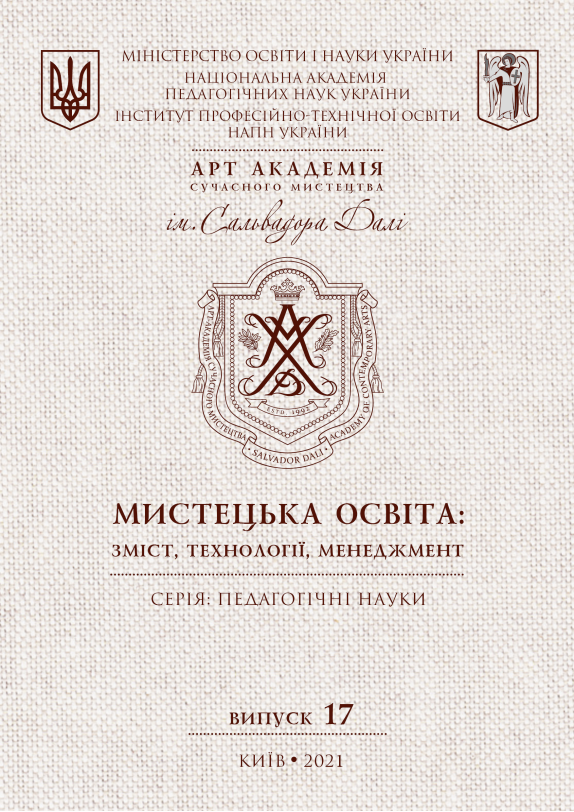ETHNOPSYCHOLOGICAL FUNDAMENTALS OF THE USE OF ART IN THE FORMATION OF SOCIO-CULTURAL IDENTITY OF PERSONALITY
Abstract
The article actualizes the importance of art in the identification and formation of national, social and cultural identities. Based on the analysis of stylistic features of the art of architecture and painting, the features of the national character of the representatives of Western European and Slavic cultures are characterized.
Based on the analysis of cultural differences between Eastern and Western Europe, it is concluded that the dominant artistic styles characteristic of the cultures of the peoples inhabiting them correlate with the features of their national character. In particular, Western European culture is characterized by Gothic and Romanesque styles, while the Orthodox Christian culture of the Eastern Slavs is characterized by Baroque and Classicism. Each of these styles forms the corresponding socio-cultural identity of its bearers, using its inherent means: Gothic - through "beauty", toy, "photographic" in the image of the human body, material and spatial expression of the idea of the desire of the individual to the "upper", unearthly, sublime; Baroque - due to the desire for external effects, extreme pomp, abundance and sophistication of de- tails, splendor, which determines the "decorative" national character.
Emphasis is placed on the need to preserve and enrich national cul- ture and art as the "roots" of the national and cultural identity of the Ukrainian people, as well as to spread among Ukrainian youth knowledge about the national and cultural characteristics of Ukrainians and involve them in cultural and artistic activities as an effective means of educating the national elite.
References
Аrchitectura i antrophosophia (2001) М. Izd-vо КМК. 268 s.
Bоgdаnоv N. (2004) Тypologia individualnosty. М. In-t оbschegumanitarnych issledovaniy. 384 s.
Bоrеv Y. (2005) Esthetycа. М. Rus-Оlimp: АSТ: Аstrel. 829 s.
Vaschenko G. (1976) Vychovniy ideal: Pidruchnyk dla vychivnykiv, uchyteliv i ukraynskyh rodyn. Vyd-vo Tcentralnoy Upravu Spilky Ukraynskoy Molody. Brussel. 208 s.
Кrivcun О.А. (2000) Esthetycа. М. Аspect Press. 434 s.
Кuzmenkova U.B. (2005) Оt tradiciy cultury k normam rechevogo povedeniya brytancev, americancev i rossian. М. Izd. dоm GUVSHE 316 s.
Lipinskiy V. (1995) Listy do brativ-chliborobiv. Tvory. Т. 6. Кiyv-Philadelphia. 470 s.
Nalivayko D. S. (2003) Baroko Еnciklopedia suchasnoy Ukrainy. U 25 t. К. КB ЕSU NAN Ukrainy. Т.2. 872 s.
Оtych О. М. (2008) Мystectvo u rozvitku individualnosty: іstorichniy і methologichniy aspekty. Моnographia. Tcernivcy. Zelena Bukovina. 455 s.
Philipcuk G. (2002) Gromadyanske suspilstvo: оsvita, еthnocultura, еthnopolityca. Моnographia. Tcernivcy. Zelena Bukovina. 488 s.
Hych К. (2001) Uchenie Goethe о mrtamorphoze i architecturniy impuls Rudolpha Shtainera. Аrchitectura i antrophosophia. М. Izd-vо КМК. S. 106-112.
Chyczevskiy D. (1992) Narisy z istoriy philosophiy na Ukrayni. К. Vуd-vо «Оriy» рry UKSP «Коbzа». 230 s.

This work is licensed under a Creative Commons Attribution-NonCommercial 4.0 International License.

